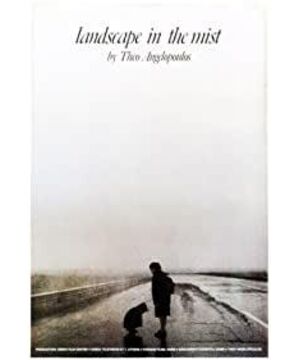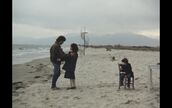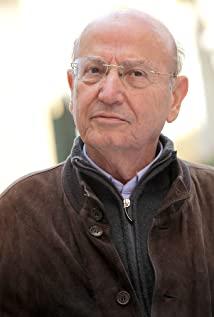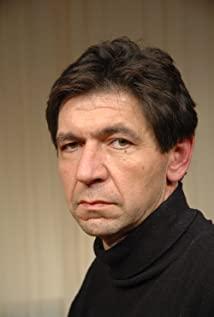"Landscape in the Fog" should be director An Zhe's masterpiece, bringing the long-shot aesthetics to the extreme, and the film is full of symbols and metaphors, allowing people to think poetically and comprehend the true meaning of life. 1. The common goal of Ulla and Alexander in the symbolism film—the father in Germany is a symbol in itself. According to my uncle, they were illegitimate children, and their father could not be identified at all. Therefore, the father in Germany actually represents the ideal and goal of the two children's growth. Before the two embark on their journey, Alexander visits a patient named "Seagull" in a mental hospital. Although he is in a mental hospital, his thoughts are free, and he wants to spread his wings and fly high, which represents Alexander's pursuit of freedom. The two witness a wedding, and the bride runs away and is caught again. A farm truck pulled a bloody horse and died in front of them. Alexander cried sadly, and the wedding team continued to celebrate, using joy to set off the sadness of the siblings. This dead horse hints at Ulla's fate, and will be wounded for ideals. The handsome actor that the siblings met on the way was named Oreste. His crew could not find a theater performance, so they could only rehearse at the beach. In the end, in order to save Grandpa, he even sold his costumes. It symbolizes that Greek artists at this time were marginalized by society and could only sell their souls for a living. Oreste found a piece of film in the trash can with a thick fog inside. Oreste told the siblings that there was a tree in the fog, and later told them there wasn't. Corresponding to the end of the film, it actually implies that the ideal goal cannot be achieved, and that tree may not exist. After Ulla was raped, a man in the tavern grabbed a chicken. Ulla, who symbolizes the rape, is powerless to resist in the face of fate. After the male protagonist left the crew, he couldn't sleep at night, facing the sea and thinking about life. Suddenly a helicopter left the water with a giant hand. This is the hand of God, which controls the fate of mankind and cannot be resisted. The dense fog at the end symbolizes an uncertain fate. And that tree is the incarnation of the father in Germany, indicating that the siblings have achieved their ideal goals, so they embraced the tree together. 2. Aesthetics of long shots One of the biggest problems with this film is that there are too many long shots in fixed positions, and many shots are even close to still, which can easily make people drowsy. But there are two advantages to long shots, the first is the poetic atmosphere created. Snow fell in the sky after the siblings were sent to the police station for the first time. The police began to look up to enjoy the snow scene. At this time, the police and passersby were still, only the sister and brother held hands and fled the scene. This is the director's poetic lens to sing the praises of the brothers and sisters who dare to break the rules set by the society and strive to pursue their ideals. There is also a shot of a sister and brother walking together in the wind and rain, implying the wind and rain of life. Pursuing ideals is destined to endure the wind and rain of reality. The second advantage of long shots is that there will be many silent shots, but these shots can express more content and achieve the effect of "silence is better than sound at this time". The first time the siblings met Orest, Orest asked them if they could get in the car. The sister turned her back to him and was silent. This was her thinking, whether to get in his car. When the man who raped Ulla took his siblings to dinner, he molested the waiter at the restaurant, and another man said to him: That woman is mine. After that, he raised his fist, and the two fell silent. The subtext was to grab a woman with me, and I would beat you. After Ulla was raped, she did not cry, but remained silent, looking at the hands dipped in the virgin's blood, implying the humiliation in her heart after being raped. The brothers and sisters meet Oreste again. The composition is first with the two brothers and Oreste on both sides of the motorcycle, and then Ulla and Oreste are standing and ready to dance, and Alexander is sitting, indicating that at this time Ulla falls in love with Oreste. But then she ran to the sea, and the camera fell silent again. Ulla remembered her experience of being raped, and the silence showed her inner despair. After Orest and the siblings saw the giant hand, the camera fell silent again, representing the shock of the three. Oreste pressed his head on the motorcycle, alluding to the pain in his heart that his fate could not be changed. Oreste took the siblings to a bar to eat, and Ulla fell into silence after finding out that he was gay. This was her disappointment when she found out that her first love was actually gay. Then there's that famous 360-degree shot of Ulla and Oreste hugging, implying Ulla's inner despair and sadness. At the railway station, Ula made sexual innuendo to a railway worker for a train ticket of 350 yuan. The railway staff fell into silence, first smoked a cigarette to calm down, then stepped out of the camera and started pacing, implying the inner struggle. After walking to the train, he turned back twice to signal Ula to go over, indicating that he had lost to his inner demon. But in the end he put down the money and ran away, which shows that he is still a A person with a conscience cannot attack an underage Ula. 3. About the theme This is a story about growing up. The young sister and brother pursue their ideal goal - looking for their father far away in Germany. The two were hindered by society, experienced the ups and downs of life, and were even raped in life, but both of them grew up (the elder sister learned to use sexual cues to make money, and the younger brother used part-time jobs to buy sandwiches for the elder sister.) In the end, the two smuggled in. Germany, spreading the fog of fate, embraced the tree that symbolizes the father, and achieved its ideal goal. Just like the story in the biblical Genesis that my sister told my brother at the beginning and my younger brother told my sister at the end: "In the beginning it was dark, then there was light, and that light came from the darkness. Then the earth emerged from the sea, and then there were rivers, lakes, and then there were The towering mountain peaks. Flowers are blooming, trees are shady, animals and birds are coming." As long as we have a goal in life, and working hard for this goal, we can create light in the darkness and illuminate the darkness of life. But it is said that the script did not start out that way, and Angelopoulos wanted the two children to disappear into the thick fog. When his seven-year-old daughter saw the script, she cried: "Where is father? Where is home?". So he let the siblings go through the "maze" and hugged the tree of life. Angelopoulos said to his daughter, "If you want, you can recreate the world. Just like this, with a flick of your hand, the fog will disappear." A lot of details: the uncle said that the two children were actually illegitimate children, and the father could not be found at all; the dead horse symbolizing fate; Oreste said that the tree in the film did not exist; In hinting to us the original ending, the dense fog of fate cannot be spread, and the ideal country we strive to pursue does not actually exist. About the theme This is a story about growing up. Young siblings pursue their ideal goal - looking for their father far away in Germany. The two were hindered by society, experienced the ups and downs of life, and were even raped in life, but both of them grew up (the elder sister learned to use sexual cues to make money, and the younger brother used part-time jobs to buy sandwiches for the elder sister.) In the end, the two smuggled in. Germany, spreading the fog of fate, embraced the tree that symbolizes the father, and achieved its ideal goal. Just like the story in the biblical Genesis that my sister told my brother at the beginning and my younger brother told my sister at the end: "In the beginning it was dark, then there was light, and that light came from the darkness. Then the earth emerged from the sea, and then there were rivers, lakes, and then there were The towering mountain peaks. Flowers are blooming, trees are shady, animals and birds are coming." As long as we have a goal in life, and working hard for this goal, we can create light in the darkness and illuminate the darkness of life. But it is said that the script did not start out that way, and Angelopoulos wanted the two children to disappear into the thick fog. When his seven-year-old daughter saw the script, she cried: "Where is father? Where is home?". So he let the siblings go through the "maze" and hugged the tree of life. Angelopoulos said to his daughter, "If you want, you can recreate the world. Just like this, with a flick of your hand, the fog will disappear." A lot of details: the uncle said that the two children were actually illegitimate children, and the father could not be found at all; the dead horse symbolizing fate; Oreste said that the tree in the film did not exist; In hinting to us the original ending, the dense fog of fate cannot be spread, and the ideal country we strive to pursue does not actually exist. About the theme This is a story about growing up. Young siblings pursue their ideal goal - looking for their father far away in Germany. The two were hindered by society, experienced the ups and downs of life, and were even raped in life, but both of them grew up (the elder sister learned to use sexual cues to make money, and the younger brother used part-time jobs to buy sandwiches for the elder sister.) In the end, the two smuggled in. Germany, spreading the fog of fate, embraced the tree that symbolizes the father, and achieved its ideal goal. Just like the story in the biblical Genesis that my sister told my brother at the beginning and my younger brother told my sister at the end: "In the beginning it was dark, then there was light, and that light came from the darkness. Then the earth emerged from the sea, and then there were rivers, lakes, and then there were The towering mountain peaks. Flowers are blooming, trees are shady, animals and birds are coming." As long as we have a goal in life, and working hard for this goal, we can create light in the darkness and illuminate the darkness of life. But it is said that the script did not start out that way, and Angelopoulos wanted the two children to disappear into the thick fog. When his seven-year-old daughter saw the script, she cried: "Where is father? Where is home?". So he let the siblings go through the "maze" and hugged the tree of life. Angelopoulos said to his daughter, "If you want, you can recreate the world. Just like this, with a flick of your hand, the fog will disappear." A lot of details: the uncle said that the two children were actually illegitimate children, and the father could not be found at all; the dead horse symbolizing fate; Oreste said that the tree in the film did not exist; In hinting to us the original ending, the dense fog of fate cannot be spread, and the ideal country we strive to pursue does not actually exist.
View more about Landscape in the Mist reviews









